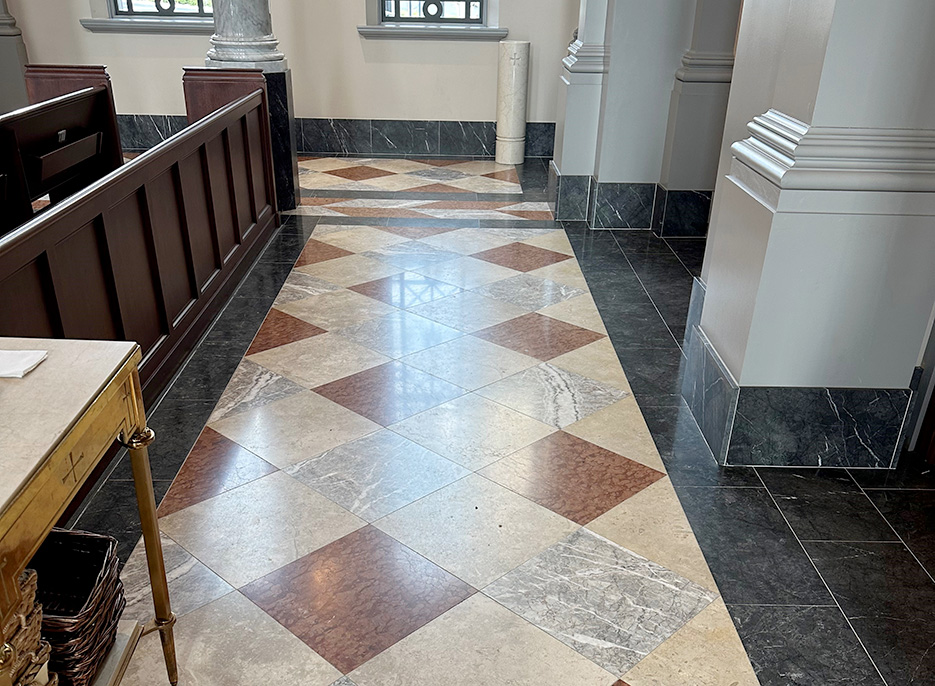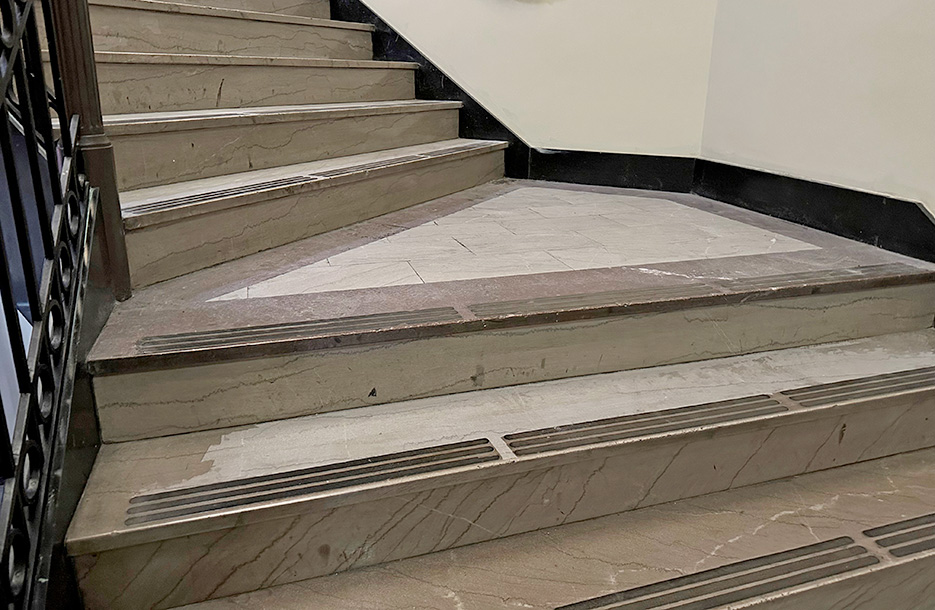Stone Restoration and Maintenance Corner – Pricing Tips: Don’t Undervalue Your Work
Bob Murrell
M3 Technologies
Photos by Bob Murrell
 |
|
Out celebrating my 30th Anniversary with Julie. Life is good! |
In this article I would like to cover a few topics that many restoration professionals encounter and deal with on a routine basis.
First, I wanted to take a moment to celebrate my 30th Anniversary to my lovely wife, Julie! Also, to brag on the latest addition to my family. I now have a grandson, in addition to my beautiful granddaughter! He is named after me, as is my granddaughter. His name is Murrell and her name is Bobby. I am such a blessed Bob-O (grandpa)! Life is good.
What is the going rate for restoration services? I get asked that question all the time. There are many factors to consider when responding to that question. Location is an important factor when considering this. If you’re doing restoration work in New York City, many costs are considerably higher than in Knoxville, Tennessee. Labor costs more, taxes cost more, fuel costs more, local regulations and codes are probably much stricter, which also increases costs.
As an example of this, and at the time of this writing, gas prices in Knoxville were about $2.79 per gallon, and trending up. I would venture to say that gas in New York City is probably on its way to double that. Obviously, the labor rates are much higher in NYC than in Knoxville, too. Codes and regulations? Fuhgeddaboudit…
Back in the day, I used to advise that as an average, restoration contractors should be charging approximately $1 per step, per square foot. Lippage removal would be $2/step/ square foot. So, for example, on a fairly easy-to-work marble (Crema Marfil, for example) with mild to moderate lippage (which is pretty rare actually, as its usually moderate to severe), you might have 7-8 steps. Starting with lippage removal (40-50 grit LT metal-bonds), you would then progress to 60 grit resin, 120 grit resin, 220 grit resin, 400 grit resin, and maybe 800 grit resin. After the lippage removal and honing phases were satisfactorily completed, polishing with Majestic 5X Gold would be the next step. Finally, the optional step of impregnating/sealing would be last.
Therefore, in the above scenario, $2 for the lippage removal plus $1 for each of the additional steps (7 steps = $7) would equal to a $9 per square foot price. That is all good, until you factor in how complex the project might be. For example, consider what would be necessary to do the edging. In the above scenario, if the floor is square or similar, the edging would just be part of the $9/square foot price and you should be fine with your quote. However, if you have alcoves, columns, or other added edgework, that $9/ square foot may be inadequate. In other words, if the edge work is exceedingly difficult, the $9 per square foot price should probably be increased to make up for the added time required to finish the edges.
 |
|
Typical lippage removal to pre-polish: LT lippage discs and TX Triple Thick resin diamond discs, from 60 grit to 800 grit. |
The above process is a general overview of a common project for restoration contractors. There are always other factors to consider. Factors like: how far away (travel time) is the project? Is the client difficult to do business with? Is the project up 3 flights of stairs? You get the picture. Also, consider things like the larger the project, the more efficient you can be. Smaller projects are very often harder and more costly to complete. Do you have to remove your equipment every day, or can you leave it on site, and can it be safely stored while unattended? Is your water source easily accessible? Do you have to collect all wastewater (slurry, etc.) and dispose of off-site? What about adequate and uninterrupted electrical service? How hard will surrounding sensitive areas be to mask off or protect?
 |
|
Notice all of the extra edgework because of the complex alcoves and extra walls. |
It gets even more complicated. What about stairs and countertops? Going around toilets in small areas –and you will be doing this at some point – is tedious and takes more time than straight floor work. There are many aspects of a project to consider. These must all be calculated in, if you want to turn a profit, that is. It is not easy. If it was, anybody could do it, right?
 |
|
Stairs are definitely more time-consuming and labor intensive. Figure the extra time into your pricing. |
Nowadays, I am recommending more and more, that charging a straight day rate is easier to calculate and invoice. There is less itemizing involved, at least on paper. You will still have to physically examine the project site and consider the same factors as discussed above. All of the same issues will still be in play. You will have to calculate and estimate the amount of time (days) of work necessary to complete the project.
For the day rate charge, I suggest anywhere from $1,500 per day to $2,000, and possibly even more per day, based on your region of the country. This would be for a two-person crew and would include travel time, tools, chemicals, and all detailed work. Of course, the trick now is to be able to accurately guesstimate the number of days to complete the project. I think that a half-day charge would be the minimum charge.
Another related topic that comes up is a deposit for the project. On larger projects, especially commercial, a 30% deposit for tooling, chemicals, and other consumables can be requested. You can also request draws for longer projects, with a final payment once completed. This is a fairly common practice in the commercial market.
As always and before beginning any new project, I recommend submitting a test area to confirm the results and the procedure, prior to general application of a stone or hard surface restoration or maintenance project. You can charge for going to the project site and doing and submitting a test area and in many cases I think this is a good idea. You can lump the test area fee into the contract if they accept your bid.
Remember, if this trade was easy, anybody could do it. Price out a plumber, HVAC, or similar rate – and there are way more plumbers than restoration professionals. Don’t be shy to charge a premium as you should always plan on unforeseen issues.
Also, the best way to help ensure success is by partnering with a good distributor, like BB Industries, that knows the business. They can help with technical support, product purchase decisions, logistics, and other pertinent project information.
Bob Murrell has worked in the natural stone industry for over 40 years and is well known for his expertise in natural stone, tile, and decorative concrete restoration and maintenance. He helped develop some of the main products and processes which revolutionized the industry, and is currently the Director of Operations for M3 Technologies.
Send your comments and questions to Bob at attn:publisher@slipperyrockgazette.net .